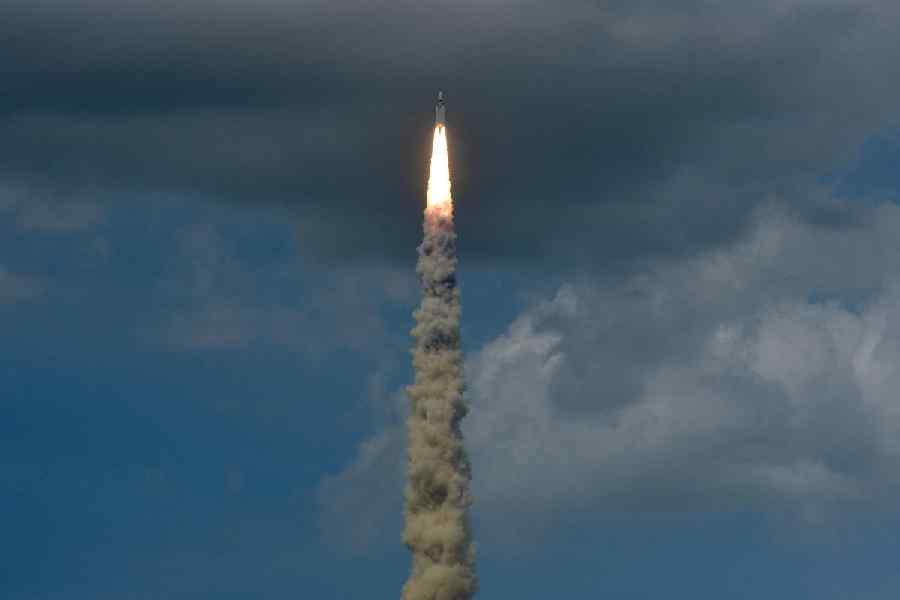A thruster rocket aboard Chandrayaan-3 fired for about 20 minutes on Wednesday and lowered the spacecraft into a 174km-by-1,437km elliptical orbit around the moon, a fresh milestone in its mission towards a soft landing.
“Even closer to the moon’s surface,” the Indian Space Research Organisation (Isro) said in a tweet. The next orbit-lowering manoeuvre is scheduled for August 14 between 11.30 and 12.30 hours IST, the space agency said.
The next orbit-lowering operation on August 16 is designed to place Chandrayaan-3 into a 100km circular orbit, an Isro official said. After this, the lander-rover will separate from the spacecraft’s propulsion module and prepare for a powered descent, slowing down with rocket engines to soft land at a site about 650km from the lunar south pole on August 23.
After touchdown, the 26kg six-wheeled robotic rover will emerge from the lander and explore the lunar terrain near the landing area. Both the lander and rover are designed to function for a full lunar day — or 14 Earth days.
Chandrayaan-3, launched on July 16, is Isro’s third lunar mission. Chandrayaan-1, launched in 2008, was a lunar orbiter that helped detect signatures of water on the moon. Chandrayaan-2 launched in 2019 was a lander mission, but critical failures during its final descent phase caused it to crash on the moon.
Mission planners have loaded Chandrayaan-3 with extra fuel, designed the spacecraft for myriad failures, and assigned a landing area 40-fold larger than was earmarked for Chandrayaan-2 to minimise the risk of a catastrophic crash.
The candidate landing zone for Chandrayaan-3 is a 4km-by-2.5km strip, 40 times bigger than the 500m-by-500m for its predecessor spacecraft. The extra fuel and the bigger landing site will provide the spacecraft greater flexibility during descent.
Scientific instruments aboard the lander-rover are expected to provide fresh insights into lunar geology, heat from the moon’s interior, and the composition of the lunar surface and rocks near the landing site which is an unexplored lunar region.











